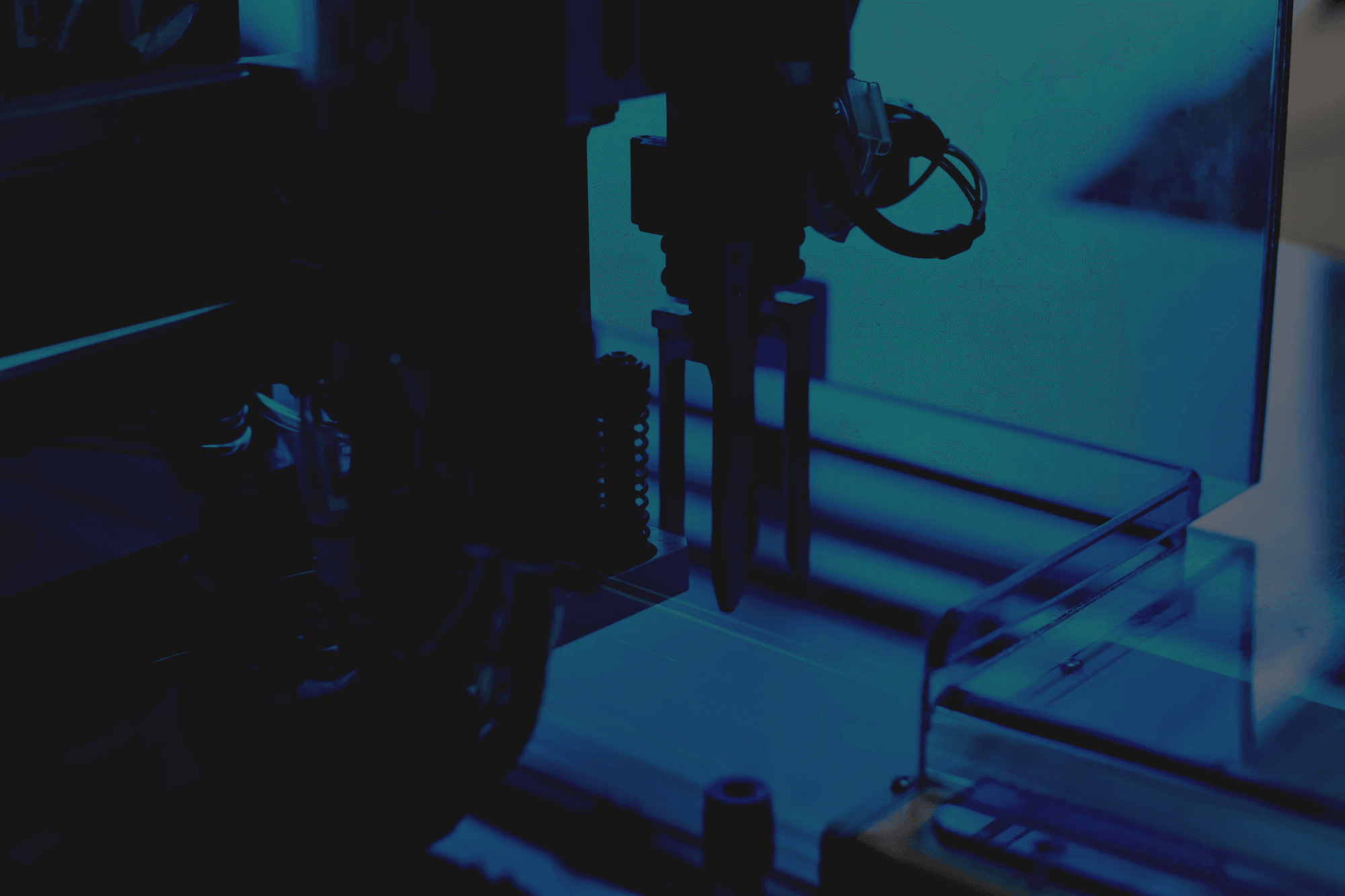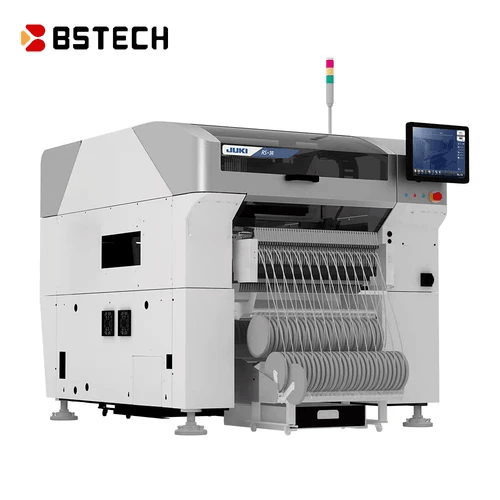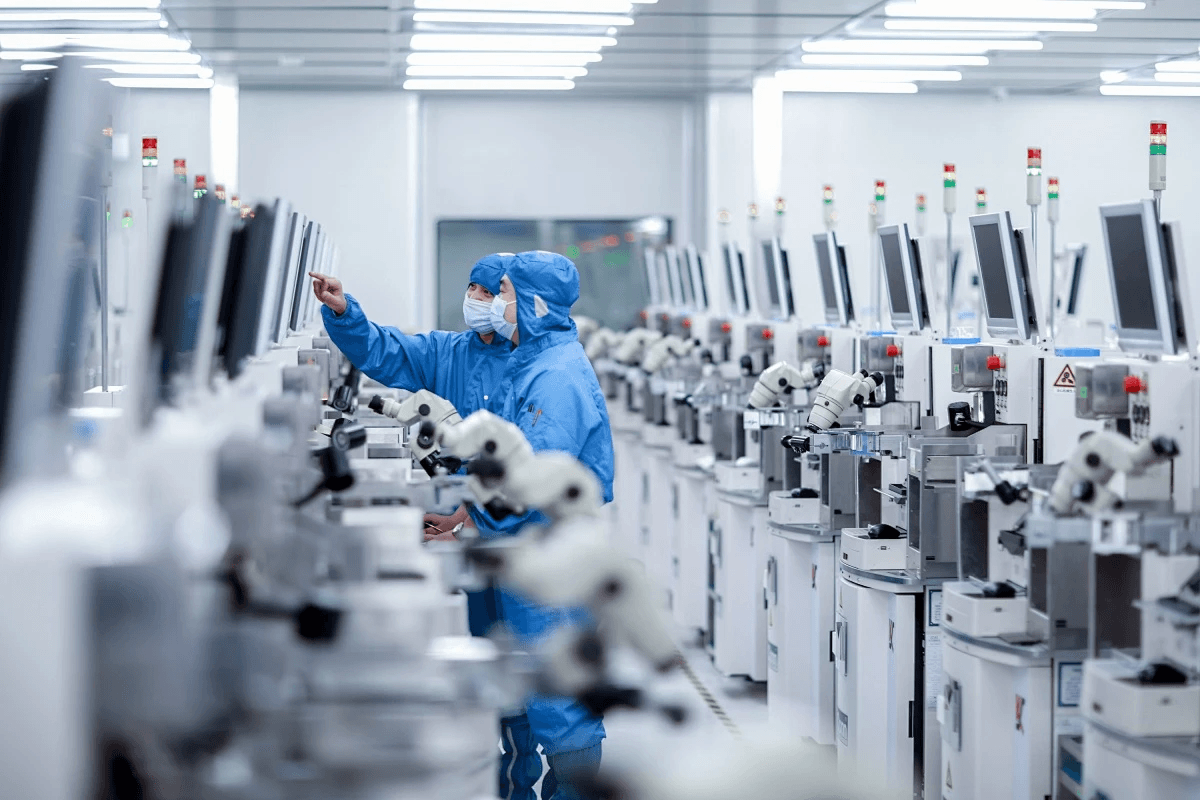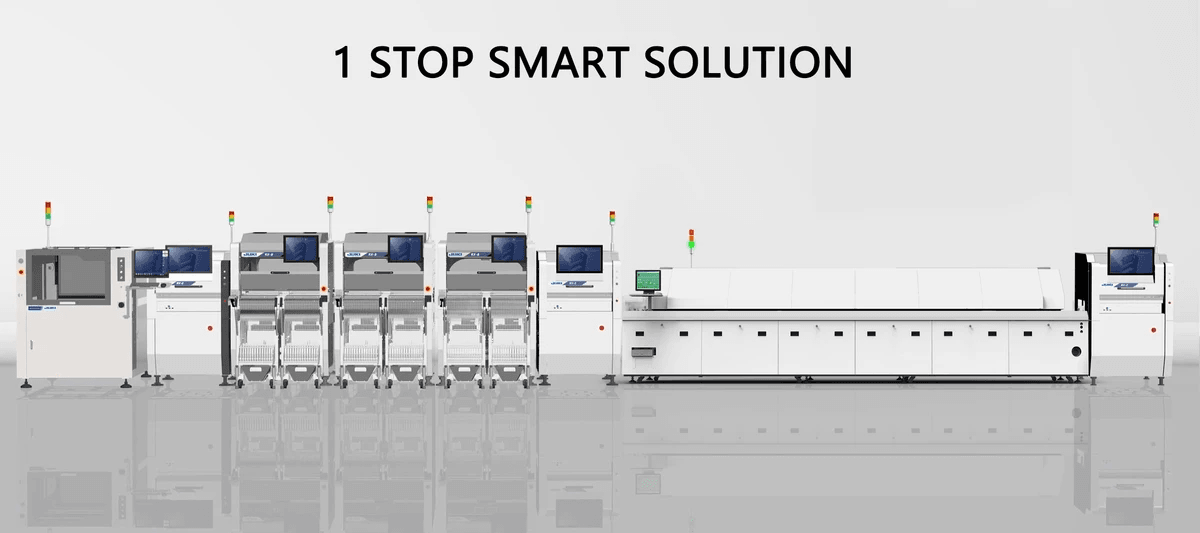Introduction

In the fast-paced world of electronics, efficiency and precision are paramount. Enter the machine pick and place technology, a game-changer in circuit card assembly that has revolutionized how we handle PCB assembly boards. With advancements in automation, this technology is not just about speed; it’s about elevating the quality and reliability of every circuit board assembly.
The Rise of Machine Pick and Place
The machine pick and place phenomenon emerged as a response to the growing demand for faster production times in PCB assembly. As electronic devices became more complex, traditional manual methods struggled to keep pace, leading to the adoption of sophisticated machines designed for precision placement. Today, these machines are integral to PCB circuit board manufacturing, streamlining processes that once took hours into mere minutes.
Understanding Circuit Card Assembly
At its core, circuit card assembly involves assembling various electronic components onto a PCB board to create functional devices. This intricate process requires a delicate balance between manual skill and automated efficiency, especially as designs grow increasingly compact and complex. Understanding this dynamic is crucial for appreciating how machine pick and place technologies enhance overall productivity in circuit board assembly.
Benefits of Advanced Techniques
The integration of advanced techniques such as machine pick and place brings numerous benefits to PCB and assembly processes. Not only does it significantly reduce production time, but it also minimizes errors associated with human handling—ensuring that each component is placed precisely where it needs to be on the PCB circuit board. Furthermore, these innovations pave the way for real-time quality control measures that guarantee high standards throughout production.
Overview of Machine Pick and Place Technologies

The realm of machine pick and place technology has undergone a remarkable transformation, reshaping the landscape of circuit card assembly. Originally, this process relied heavily on manual labor, making it time-consuming and prone to human error. However, advancements in automation have paved the way for highly efficient systems that streamline PCB assembly board production, enhancing both speed and accuracy in circuit board assembly.
History and Evolution
The journey of machine pick and place technology began in the late 20th century when the demand for more precise PCB assembly grew alongside the electronics boom. Early machines were rudimentary, often requiring significant human intervention to function effectively. Over time, these systems evolved into sophisticated automated solutions that could handle various components with increased precision—ushering in an era where circuit card assembly became synonymous with efficiency.
With each technological leap, from vacuum pick-up tools to state-of-the-art robotic arms equipped with advanced sensors, the capabilities of machine pick and place systems have expanded dramatically. The integration of software solutions has further enhanced their functionality by allowing for real-time adjustments during PCB assembly processes. Today’s machines can adapt to different board layouts seamlessly while maintaining high-speed production rates—an evolution that continues to shape the future of circuit board assembly.
Key Components Explained
Understanding how machine pick and place operates requires a closer look at its key components that work in harmony to achieve flawless PCB assembly. At its core are high-precision robotic arms equipped with various end-effectors designed specifically for picking up components like resistors, capacitors, and integrated circuits from feeders or trays. These robotic arms rely on advanced motion control systems that ensure accurate placement onto the PCB board.
Another critical component is the vision system which plays a pivotal role in identifying component orientation and position on the PCB circuit board before placement occurs. This system uses cameras and sophisticated image processing algorithms to verify that each part is correctly aligned—a crucial step in ensuring quality throughout the circuit card assembly process. Additionally, feeders are essential as they provide a steady supply of components; they come in multiple formats such as tape-and-reel or tray-based systems tailored for specific types of parts.
Current Leading Technologies
As technology progresses at breakneck speed, several leading innovations have emerged within machine pick and place systems that make them indispensable for modern PCB assembly operations. For instance, modular machine architectures allow manufacturers to customize their setups based on specific production needs—ensuring flexibility without sacrificing performance during circuit card assembly tasks. Furthermore, advancements in artificial intelligence (AI) are enabling predictive maintenance features that help preemptively address potential issues before they disrupt manufacturing processes.
Another exciting development is collaborative robotics (cobots), which work alongside human operators to enhance productivity while reducing strain on workers during repetitive tasks involved in PCB assembly processes. These cobots can be programmed easily while maintaining safety protocols—fostering a more efficient working environment without compromising quality standards associated with traditional methods of circuit board assembly.
Lastly, innovations like high-speed placement heads capable of handling an extensive range of components simultaneously are revolutionizing how quickly PCBs can be assembled today compared to just a few years ago—ultimately driving down costs while improving overall product quality across industries reliant on electronic devices.
How Machine Pick and Place Works

The machine pick and place process is an intricate dance of technology, precision, and efficiency that plays a crucial role in circuit card assembly. By automating the placement of components onto a PCB assembly board, these machines significantly enhance productivity while reducing the likelihood of human error. Understanding how this process unfolds can illuminate its importance in modern electronics manufacturing.
Step-by-Step Process
At the heart of machine pick and place lies a systematic approach that begins with loading the PCB assembly board into the machine. Once secured, the machine's software identifies where each component needs to be placed on the circuit board assembly based on pre-programmed designs. The machine then uses robotic arms equipped with suction or mechanical grippers to pick components from their respective trays or reels and accurately place them onto the designated spots on the PCB circuit board.
After placement, a reflow oven typically follows to solder the components securely onto the PCB board. This entire process is not just about speed; it’s about achieving high accuracy at every step, ensuring that each component is positioned correctly for optimal functionality in its final application. With such precision, it's no wonder that machine pick and place systems have become indispensable in modern electronics manufacturing.
Integration with PCB Assembly
Machine pick and place technology seamlessly integrates into larger PCB assembly workflows, enhancing overall efficiency from start to finish. During initial stages of production, designers create detailed layouts for circuit card assembly using sophisticated software tools that guide subsequent steps in manufacturing. Once these layouts are finalized, they serve as blueprints for automated systems to follow during both placement and soldering processes.
Furthermore, this integration allows for real-time adjustments based on production data; if any issues arise during assembly—such as misalignment or defective components—the system can adapt quickly without significant downtime. Such flexibility ensures that quality remains high while maintaining production schedules—a win-win scenario for manufacturers striving to meet market demands efficiently.
The Role of Vision Systems
Vision systems are an integral part of modern machine pick and place operations, providing critical feedback throughout the circuit board assembly process. These advanced imaging technologies enable machines to verify component placement accuracy by capturing high-resolution images before and after components are placed on a PCB board. If discrepancies are detected—like misplaced parts or incorrect orientations—the system can automatically correct errors before moving forward.
Additionally, vision systems facilitate quality control by inspecting solder joints post-assembly to ensure they meet industry standards for durability and conductivity. This real-time monitoring capability enhances reliability within PCB assembly processes while minimizing waste associated with faulty products—an essential aspect in today's competitive electronics market where precision is paramount.
Advanced Techniques in Circuit Board Assembly

The landscape of circuit board assembly is rapidly evolving, driven by advanced techniques that enhance efficiency and precision. Among these techniques, the integration of automation and robotics stands out as a game-changer for machine pick and place processes. By leveraging cutting-edge technology, manufacturers can streamline their pcb assembly workflows, resulting in higher throughput and reduced labor costs.
Automation and Robotics Integration
Automation is revolutionizing how we approach circuit card assembly, particularly through the use of robotics. Machine pick and place systems are now equipped with sophisticated robotic arms that can handle components with remarkable speed and accuracy. This seamless integration not only minimizes human error but also allows for 24/7 operation, making it an attractive solution for high-volume pcb board production.
Moreover, the flexibility of automated systems means they can easily adapt to different pcb assembly projects without extensive reconfiguration. This adaptability is crucial in a market where product lifecycles are shortening and customization is key. As a result, manufacturers can respond quickly to changing demands while maintaining quality standards across various circuit board assembly tasks.
Precision Placement Technologies
Precision placement technologies have become essential in ensuring that components are accurately positioned on the pcb circuit board during assembly. Advanced machine pick and place systems utilize high-resolution cameras and sophisticated algorithms to achieve this level of accuracy. These technologies enable real-time adjustments during the placement process, significantly reducing misalignment issues that could lead to costly rework or defects.
In addition to enhancing accuracy, precision placement technologies also contribute to increased production speeds. By minimizing errors associated with manual handling or outdated equipment, manufacturers can optimize their workflows for maximum efficiency in circuit card assembly operations. The result is a more reliable manufacturing process that meets stringent quality requirements while keeping pace with industry demands.
Real-Time Quality Control
Real-time quality control has emerged as a critical component in modern pcb assembly processes, ensuring that every step adheres to strict standards of excellence. Machine pick and place systems are now equipped with integrated inspection capabilities that monitor each component's placement as it occurs on the pcb board. This instantaneous feedback loop allows operators to detect issues early on, preventing larger problems from developing later in the production cycle.
Furthermore, implementing real-time quality control enables manufacturers to maintain consistent product quality across multiple batches of circuit board assemblies. With detailed data analytics available at their fingertips, companies can make informed decisions about process improvements based on actual performance metrics rather than assumptions or historical data alone. Ultimately, this proactive approach leads to enhanced customer satisfaction through higher-quality products delivered on time.
Bensun Technology: A Case Study

Bensun Technology stands at the forefront of the machine pick and place revolution, offering an array of services that cater to the complex needs of circuit card assembly. Their expertise in PCB assembly board production is complemented by cutting-edge technology, ensuring precision and efficiency in every project. With a commitment to quality and innovation, Bensun has carved out a niche in the competitive landscape of PCB and assembly services.
Comprehensive Service Offerings
Bensun Technology provides a comprehensive suite of services that encompasses all aspects of circuit board assembly. From initial design consultations to final testing, their offerings ensure that every stage of PCB assembly is handled with care and expertise. The company specializes in machine pick and place solutions that enhance productivity while maintaining the highest standards for quality control.
Their diverse service portfolio includes prototyping, low-volume production runs, and high-volume manufacturing tailored to meet specific client needs. This flexibility allows Bensun to accommodate various sectors, from consumer electronics to automotive applications, making them a versatile partner in PCB circuit board manufacturing. By leveraging advanced techniques like automation and robotics integration, they streamline processes that traditionally slowed down production timelines.
Success in PCB Circuit Board Manufacturing
Bensun Technology's success story is deeply intertwined with its innovative approach to PCB circuit board manufacturing. The company has consistently delivered high-quality products by utilizing state-of-the-art machine pick and place equipment designed for precision placement technologies. Their commitment to continuous improvement has led them to adopt real-time quality control measures that ensure each PCB board meets rigorous industry standards.
Over the years, they have built strong relationships with clients who rely on their expertise for both small-scale projects and large-scale productions alike. The seamless integration of advanced machinery into their workflow has not only enhanced efficiency but also reduced costs significantly for their clients. This success is evident in their growing reputation as a leader in the field of circuit card assembly.
Client Testimonials and Project Highlights
Client testimonials speak volumes about Bensun Technology's impact on the industry; many highlight how their machine pick and place capabilities transformed project outcomes positively. Clients rave about the reliability of Bensun’s services when it comes to complex PCB assembly tasks—often noting improved turnaround times without compromising quality or precision on their circuit boards. One client remarked that partnering with Bensun was akin to having an extension of their own team dedicated solely to enhancing product development through superior PCB manufacturing practices.
Project highlights showcase a range of successful collaborations across various industries; from high-tech gadgets requiring intricate designs to robust automotive components needing durable PCBs—Bensun has done it all! These achievements underscore not just technical prowess but also an unwavering commitment to customer satisfaction within every aspect of circuit card assembly work they undertake.
Future Trends in Machine Pick and Place

The world of machine pick and place technology is evolving at breakneck speed, with innovations that promise to revolutionize circuit card assembly. As manufacturers strive for greater efficiency and accuracy, new tools and techniques are emerging that enhance the capabilities of PCB assembly boards. From smarter machines to more advanced materials, the future looks bright for those involved in circuit board assembly.
Innovations on the Horizon
One of the most exciting innovations on the horizon is the development of ultra-fast machine pick and place systems that can handle a wider variety of components with unprecedented speed. These systems will not only improve production rates but also offer enhanced flexibility, allowing manufacturers to switch between different PCB assembly tasks with minimal downtime. Additionally, modular designs are gaining traction, making it easier to upgrade or replace specific components without overhauling entire machines.
Another promising innovation is the integration of collaborative robots (cobots) alongside traditional pick and place machines. These cobots can work safely alongside humans, assisting in complex tasks while reducing labor costs and minimizing human error during circuit board assembly processes. This synergy between human operators and machines could lead to a new era where efficiency meets craftsmanship.
Lastly, advancements in material science are paving the way for lighter yet more durable components that can be easily handled by machine pick and place systems. The introduction of these materials will not only streamline PCB assembly but also contribute to lighter overall product designs—an essential factor in industries such as aerospace and automotive.
The Impact of AI and Machine Learning
Artificial intelligence (AI) is set to make waves in machine pick and place technology by enhancing decision-making processes during circuit card assembly. With AI algorithms analyzing data from various stages of PCB manufacturing, machines will be able to predict potential failures before they occur, significantly reducing downtime. Furthermore, machine learning enables systems to adapt over time; they become smarter through experience, optimizing their operations based on real-time data.
By incorporating AI-driven vision systems into machine pick and place equipment, manufacturers can achieve higher precision levels when placing components on a PCB board. These advanced vision systems allow for better identification of parts—even in challenging conditions—ensuring each component is placed accurately according to design specifications during PCB assembly processes. Consequently, this leads not only to improved quality assurance but also reduces waste due to misplacements or errors.
Moreover, AI's ability to analyze vast datasets opens up opportunities for predictive maintenance strategies within machine pick and place operations. By anticipating when machines require servicing or parts replacement based on usage patterns observed through data analytics, companies can save costs while maximizing productivity—a win-win scenario for any manufacturer involved in circuit board assembly.
Sustainability in PCB and Assembly Processes
Sustainability has become a key focus area across all sectors—and the world of machine pick and place technology is no exception. Manufacturers are increasingly adopting eco-friendly practices throughout their PCB assembly processes by utilizing recyclable materials for both components and packaging solutions aimed at reducing waste generated during production runs. This shift towards sustainable practices not only appeals to environmentally conscious consumers but also aligns with global initiatives focused on reducing carbon footprints.
Furthermore, energy-efficient machinery plays a crucial role in minimizing environmental impact during circuit card assembly operations as well. Newer models boast lower energy consumption rates without sacrificing performance levels—a critical factor as businesses seek ways to cut operational costs while maintaining high standards in their manufacturing processes involving machine pick and place technologies.
Lastly, sustainability efforts extend beyond just materials; many companies are now exploring closed-loop recycling systems where waste products from PCB manufacturing are repurposed into new components or raw materials used within future assemblies—creating a circular economy model within the electronics industry itself! By embracing these sustainable practices across all aspects of PCB manufacturing—including those reliant upon advanced automation like machine pick and place—the industry moves closer toward responsible growth that benefits both business interests as well as our planet's health.
Conclusion
As we wrap up our exploration of machine pick and place technologies, it’s clear that embracing advanced automation techniques is not just a trend but a necessity in today’s fast-paced manufacturing landscape. The integration of these sophisticated systems into circuit card assembly processes allows for unprecedented efficiency and accuracy, reducing production times while enhancing output quality. With the ongoing evolution of these technologies, businesses are better equipped to meet the demands of an ever-growing market.
Embracing Advanced Automation Techniques
The adoption of machine pick and place systems marks a pivotal shift in how we approach PCB assembly. By streamlining the circuit board assembly process, manufacturers can achieve higher throughput rates and minimize human error, which is crucial in producing reliable PCB boards. As companies invest in these advanced automation techniques, they position themselves to remain competitive and innovative in an industry that demands constant evolution.
Elevating the Quality of PCB Assembly
One cannot underestimate the impact that precision placement technologies have on elevating the quality of PCB assembly. These innovations ensure that components are placed accurately on the pcb circuit board, significantly reducing defects and improving overall performance. With real-time quality control mechanisms integrated into machine pick and place operations, manufacturers can maintain high standards while adapting quickly to changing production requirements.
The Future of Circuit Card Technology
Looking ahead, the future of circuit card technology is bright with promising advancements on the horizon. Innovations driven by AI and machine learning are set to revolutionize how we approach both pcb assembly and circuit board assembly processes, making them smarter and more efficient than ever before. As sustainability becomes increasingly important, integrating eco-friendly practices into pcb and assembly operations will not only benefit businesses but also contribute positively to our planet's health.
